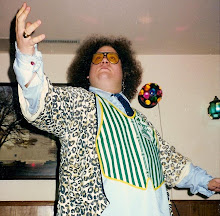My favorite albums of 2009 and 2010
The time to unveil the Year In Music edition for 2009 and 2010 has obviously arrived. Obviously.
I don't want to belabor this. Of course, I must iterate that these are my favorite full-length albums released during the past two years. I'm not saying they're the best, because I couldn't possibly have heard every album that came out in order to say so. My rule is to never trust anyone who uses the adjective "best" when describing their year-summary music lists (nor anyone who finishes theirs in time for an early December deadline). There are huge gaps in everyone's musical diet, especially if you only listen to one radio station or one type of music. Even the most eclectic listeners must ignore stuff that they think won't interest them in order to spend time with stuff that they think will. I do it, you do it, there's nothing wrong with it. But we can't honestly use "best," which implies not only judgment, but sweeping finality. I really enjoyed, and still enjoy, each of these. You might, you might not. I hope you at least enjoy reading this little trip back in time.
2009
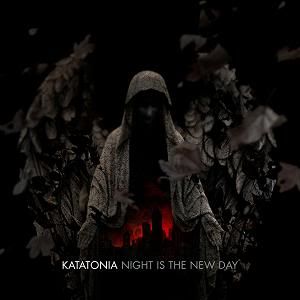 1. Katatonia, Night Is the New Day (Peaceville)
1. Katatonia, Night Is the New Day (Peaceville)
The fourth — and evidently last — album by Katatonia's longest-running lineup is the subtlest set of tracks my favorite current band has released to date. Sorta gothic, sorta progressive, sorta metal, sorta arena indie rock, the Swedes remain difficult to adequately describe (in no way, as some may claim, a "Tool clone"). Night crushes and heaves one moment, twinkles and soothes the next. The dynamics between loud and soft are pushed to their furthest extremes within the wide confines of the Katatonia sound, now abetted by tasteful synths and electronic embellishment by recent collaborator Frank Default. All the extremes of style and emotion are expertly centered by the quintet, shimmering leads and undulating rhythms anchored by Jonas Renkse's aching, supremely confident vocals. I have even come to terms with "Idle Blood," the beautiful ballad which I hope is a one-time-only sound-alike tribute to Katatonia's buddies in Opeth. This album sounds exactly the way 2009 felt to me... nervous, dejected, grasping, pensive, hopeful, and, at the last second, complete.
"The Longest Year" (official music video)
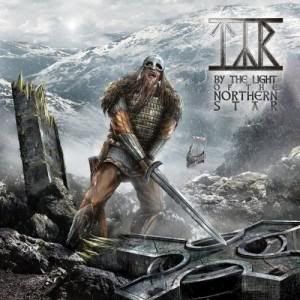 2. Týr, By the Light of the Northern Star (Napalm)
2. Týr, By the Light of the Northern Star (Napalm)
A pity about the lousy cover art (is he crying because he broke the cross?), as this is the sound of a great cult band reaching a higher echelon. Týr hails from the Faroe Islands, and their singular style blends the intricate rhythms of Faroese folk songs into bright, energized heavy metal. Here, they decided to streamline their fussy sound into something more immediate, starting with amazing opener "Hold the Heathen Hammer High," a barnstormer bursting with ridiculous fist-pumping lyrics and a boisterous high-speed chorus that rivals the greatest of old school German metal beerhall sing-alongs. Sure, the old Týr quirkiness shows up here and there during the first half, but the largely English-sung bulk rejects the sprawling epics toward which the quartet had been drifting, single-mindedly peppered with code words such as "pagan," "heathen" and "sword." Týr remains adept enough to thunder and soar through what could have been a corny LARP soundtrack, keening down from the eternal sky like strange Scandinavian gods.
"Hold the Heathen Hammer High" (official music video)
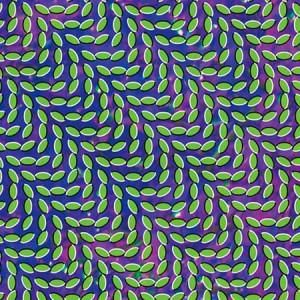 3. Animal Collective, Merriweather Post Pavilion (Domino)
3. Animal Collective, Merriweather Post Pavilion (Domino)
Even though it was practically illegal to not have this on a "Best of 2009" list, I appreciate the mass appeal of this bunch's recent work. Merriweather is a bright, happy-sounding jumble of sounds and textures that feels smart in its esoteric construction, but also just plain feels good. It's head music you can feel in your guts. What hits first and foremost is the thick texture, heavy and dense as a swamp, frequently exploding into glittery alien pop psychedelia. There's so much shit going on at any given time that it's difficult to tell which instrument is which, what's sampled and what's organic. The singles glow with the sweaty, vibrant, mantra-like energy of dance music, while the cooldowns simmer and float wistfully. Everything is soaked in effects, but what you make out through the haze focuses on the astonishingly relatable subjects of love, family and home. And therein is the true key to Animal Collective's triumph: making the mundane sound fantastic, or at least encouraging a listener to appreciate the daily beauty they might otherwise take for granted. And if you don't like it, you can just stare at the cover art for a while.
"Summertime Clothes" (official music video)
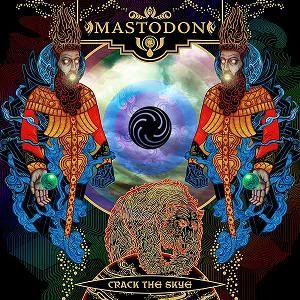 4. Mastodon, Crack the Skye (Reprise)
4. Mastodon, Crack the Skye (Reprise)
Looking back at the '00s, Mastodon obviously stands among the most important and beloved metal bands of their formative time. When their fourth album rolled out at the end of the decade, the quartet was where Metallica had been two decades prior: a rare serious metal band that everyone from graying biker dudes to teen punker chicks to college rock geeks might agree upon. Thus, Crack the Skye is in essence Mastodon's ...And Justice for All, a mature, confident, hermetically sealed magnum opus polished with accessible ass-kicking. There are memorable choruses in the sing-along — rather than shout-along — vein, the harsher vocals and youthful glimpses of grindcore now completely absent. In their place are a proggy fluidity, a wind-hewn smoothness that nods to the album's "air" theme (surely making The Mars Volta jealous, the concept album's plot relates an astral-traveling paraplegic's Devil-battling adventures with Rasputin). Ambition and acceptance have ruined many a once-great metal band (see: Metallica), but Skye gives me enormous confidence in Mastodon.
"Divinations" (official music video)
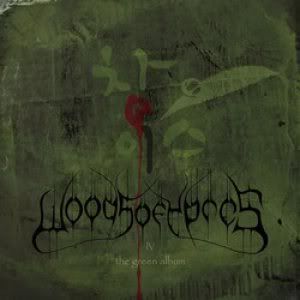 5. Woods of Ypres, Woods 4: The Green Album (Practical Art)
5. Woods of Ypres, Woods 4: The Green Album (Practical Art)
David Gold makes metal for those of us who live in the real world. The incredibly personal nature of his lyrics and themes is unfortunately not prevalent in a genre of music that is founded in raw emotion, and this is only one reason Gold's Woods of Ypres remains a special band. On this latest (recently re-released by Earache Records), the music leans toward the doom/goth side of the eclectic Woods sound, the sad, loping melodies showing an obvious love for the sullen lushness of sardonic "green" gloomsters Type O Negative (I hope Peter Steele heard this before he passed away). "Green" also signifies the relatable story of renewal which forms the backbone of Gold's musical diary of leaving his Canadian homeland for a teaching stint in South Korea. As our narrator enters, his relationship and home are torn from him, and he descends into despair. He takes a chance when offered a fresh start in a new environment, but he has carried the weight of the past with him. After much struggle, catharsis and realization, he finds the resolve within to move on. With the first pressing of the self-released CD, Gold includes a copy of Slaughter of the Seoul, the decent album he recorded with death/thrash metal act Necramyth during his time overseas. Because Slaughter's creation was part of Gold's life, the result is part of Woods 4, a sincere personal touch that typifies how this outfit operates.
"I Was Buried in Mount Pleasant Cemetery" (official music video)
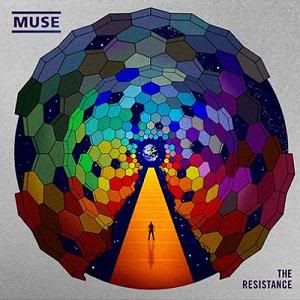 6. Muse, The Resistance (Warner Bros.)
6. Muse, The Resistance (Warner Bros.)
It feels good to genuinely enjoy a band that's as popular as Muse is. There's something warm in the communal bonding of a stadium rock sensation that I just don't get from all the little specialty acts with which I spend more time. But as we all know, modern megastars usually blow goat fetuses, so it's usually safer to keep one's ears underground. In defiance, Matt Bellamy and his gang write strong hooks and lyrics with imaginative arrangements. Muse bothers to record dynamic albums meant to be listened to in full sequence, offering enough convincing dramatics to justify their hockey barn-packing status. The Resistance is clearly the work of a self-aware stadium rock sensation, one that gorges and fortifies itself on those thousands of skyward-thrust lighters and cell phones and amplifies the energy back as The People's Music. Yeah, it's arted up with solo piano excursions here and there, but it still evokes the usual Muse hodge-podge of prime U2, Depeche Mode and Queen, bands that once knew how to artfully move many souls at once. Loudly and fervently exhorting us to fight vague dystopian oppressions with love and togetherness and all that junk, the Brits gleam and yearn exactly where they should, building a perfect machine with a human heart.
"Uprising" (official music video)
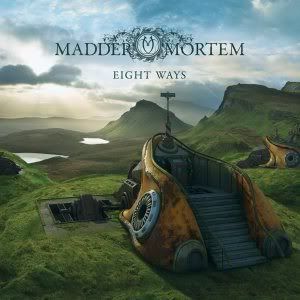 7. Madder Mortem, Eight Ways (Peaceville)
7. Madder Mortem, Eight Ways (Peaceville)
Too much "progressive metal" is as stodgy as any old radio pop, too set in its ways to explore anything but accepted modes of furrow-browed expression. Although they're not reinventing anything, Norway's Madder Mortem deserves to be mentioned alongside better-known soulmates like Katatonia and Nevermore, as they are another fussy, stormy unit which excels at doing things its own way. This is mostly due to the incomparable Agnete Kirkevaag, whose vocals are a commanding weapon which can turn quickly from seductive serenity to blood-freezing ferocity. This keeps with her bandmates' subterranean palette, a cerebral, anxious, gothic stew which submerges chunky, downtuned metal in a velvety tub of late-night jazz. Ways is the most impressive album Madder Mortem has unleashed yet, diverse and even quite accessible in places, while striving to try new settings and applications for the band's established strengths. As in the past, the push/pull of disparate elements can be jarring, but it's exciting to hear this band (especially that amazing voice) teetering between meltdown and shutdown. There's always a latent lullaby or a churning maelstrom of exotic doom in wait, and throughout Ways remains dark and raw, yet beguiling and impeccably crafted.
"Where Dream & Day Collide" (official music video)
 8. Mr. Lif, I Heard It Today (Bloodbot Tactical Enterprises)
8. Mr. Lif, I Heard It Today (Bloodbot Tactical Enterprises)
As the recession, bank and housing crises dominated, 2009 was a year fraught with pessimism and fear for a lot of non-rich Americans. The third album by the celebrated Boston MC gets my vote for the best musical encapsulation of this moment, the one which will be most worth revisiting years from now. Mr. Lif's delivery is as ever focused on substance over style, although his laser-sharp rhymes wouldn't sound half as convincing without his sly coffeehouse drone. Woven together into an industrial-strength update of the dense realm the Bomb Squad built on Public Enemy's classics, the mesmerizing beats by the likes of Edan, Headnotic, Batsauce and Willie Evans Jr. are vital components of Lif's political-meets-personal work. Guest spots are kept to a lean minimum, and the contributors (particularly a perfectly icy Bahamadia on "Breathe") add flavor without sucking the focus from the star. Lif remains committed to the soul of socially concerned rap, curiously nestling a police brutality skit that could have been on an early '90s Ice Cube disc among screeds of post-Obama ambivalence and breakdowns of the mortgage fallout. And even toward the end of the album, when heartfelt rays of kindness and kinship seep into the songs, that vibrant mix envelops the listener like a pulsing glove.
"The Sun" (official music video)
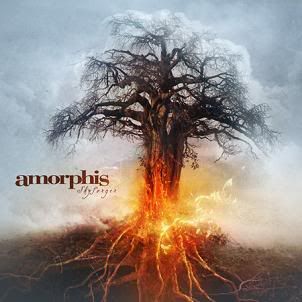 9. Amorphis, Skyforger (Nuclear Blast)
9. Amorphis, Skyforger (Nuclear Blast)
It's been a long journey back to the height of excellence for Amorphis, who remain Finland's most singular contribution to metal music. In the '90s, they were a decent melodic death metal band who stumbled into the hidden crossroads between romantic national folklore and expansive '70s psychedelia, but soon soured the recipe by gradually toning down their heavier tendencies. Although to my ears they never lost the plot completely, the entrance of versatile vocalist Tomi Joutsen in 2005 was surely the catalyst for Amorphis to once again realize their powerful potential. Two very good records later, the seemingly effortless songwriting and performances on Skyforger is that realization. Fluid guitar (particularly Esa Holopainen's molten leads) and spacy keyboards churn out winsome traditional melodies, adding grandiose textures to glistening goth-pop jams and imposing Eurometal monoliths alike. Yet dreadlocked Joutsen is the glue, a mythic marvel who can pull off tenderness and wounded melancholy as capably as he can bravado and earth-quaking roars. He is clearly the best frontman this band has ever had, and his performance catapults each already vital song into an untouchable skyward realm.
"Silver Bride" (official music video)
 10. The Appleseed Cast, Sagarmatha (Vagrant/The Militia Group)
10. The Appleseed Cast, Sagarmatha (Vagrant/The Militia Group)
I lack the sweeping knowledge of the post-rock landscape which would allow me to ascertain this album's quality in relation to everything else out there. Regardless, I know that The Appleseed Cast's seventh album creates an incredible realm in which to get lost. Before Sagarmatha, I had previously only heard the Kansas quintet's two most recent discs, which were by all accounts finessed fusions of the band's formative old-school emo (like, emotional post-hardcore, not goth costumed pop-punk) and the atmospheric instrumental tendencies of their acclaimed two-disc Low Level Owl saga. Drifting in on a shimmering pillow of chiming chords and pulsing rhythm, it's only after a six minute journey through a sun-dappled landscape, just as the pace quickens like a jet taking off, that Chris Crisci's voice creeps in to close out the last few minutes of the opener. The Appleseed Cast balances that mysterious ebb and flow, at times abruptly shifting into earthen rock that magically carries over the bleary-eyed bliss. Craftily, the giant guitar rock segments never truly disrupt the flow, rather providing intrigue in a smooth, addictive ride, a road trip with perfect weather, gorgeous scenery and no traffic.
"South Col" (live Feb. 12, 2009 at The Glass House, Pomona, CA)
15 HONORABLE MENTIONS:
Antony and the Johnsons, The Crying Light (Secretly Canadian)
Between the Buried and Me, The Great Misdirect (Victory)
Candlemass, Death Magic Doom (Nuclear Blast)
The Chasm, Farseeing the Paranormal Abysm (Lux Inframundis)
The Decemberists, The Hazards of Love (Capitol)
Dethklok, Dethalbum II (Williams Street)
Eels, Hombre Lobo: 12 Songs of Desire (EWorks/Vagrant)
Finsterforst, ...Zum Tode Hin (Einheit)
HORSE the band, Desperate Living (Vagrant)
Hypocrisy, A Taste of Extreme Divinity (Nuclear Blast)
Mos Def, The Ecstatic (Downtown)
Samael, Above (Nuclear Blast)
Sun of the Blind, Skullreader (Avantgarde)
We Were Promised Jetpacks, These Four Walls (FatCat)
Zombi, Spirit Animal (Relapse)
2010
 1. Blind Guardian, At the Edge of Time (Nuclear Blast)
1. Blind Guardian, At the Edge of Time (Nuclear Blast)
I've lazily described Blind Guardian to the uninitiated as "Queen on steroids," and Time, my second-favorite current band's ninth album, does not make me a liar, being their biggest sounding, most diverse and dramatic set to date. The Germans' main innovations this time are found in the bookends, a pair of grandiose epics that seamlessly integrate an orchestra (shockingly, a first). In between, it effectively tours all the territories BG has traversed during their career, from the oddly catchy prog-pop of recent years to the hairpin turn speed metal sing-alongs that they once seemed content to leave behind in the last millennium. Then there are the ballads, two of the best they've ever done, sumptuous medieval jobs that finally allow drummer/bagpiper/flutist Frederik Ehmke to flex folky in a manner befitting the bonfires of the gods. All of this gleams with brilliant melody, teems with engaging hooks and reams with Wagnerian bombast. Inspired by the likes of George R.R. Martin, Robert Jordan and the "Sacred" RPGs, the lyrics distill the raw emotion of nerdy fantasy, their world-weary wizards and wild-eyed warriors always asking the Big Questions amidst the magickal melees. There is a reason Blind Guardian's music is called "power metal": it obliterates prosaic notions of modesty or practicality, instead filling the listener with celestial energy, passion and, yes, power.
"A Voice in the Dark" (official music video)
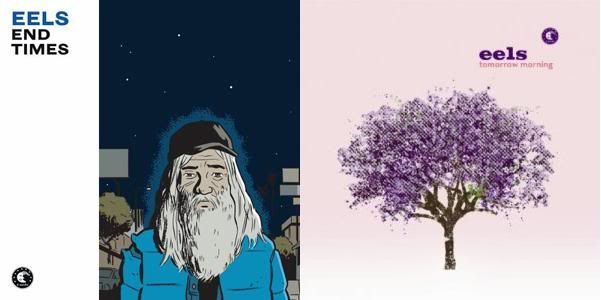 2. Eels, End Times/Tomorrow Morning (EWorks/Vagrant)
2. Eels, End Times/Tomorrow Morning (EWorks/Vagrant)
I don't care if it's cheating to have these two albums in one slot. These companions are perfect analogs for the course of my year. Along with 2009's Hombre Lobo, a once-dismissed record I have come to love, the two albums Eels released during 2010 make up a conceptual trilogy about affairs of the heart. As the year dawned, End Times emerged as an early favorite with its understated, dejected bleakness and claustrophobic beauty, its garage folk melodies simple and spare. Reflecting the painful dissolution of Mark Everett Horton's marriage, it allows for little frivolity, and even less in the way of hope. By the end of summer, Morning appeared, offering a dreamier, more fertile and buoyant look at new beginnings. The rich arrangements are wide open, as if freshly awoken to life's surprises, complimenting the confident lyrics. I was already devoted to E's bare-it-all eclecticism, yet the way these discs coincided with my moods upon their respective release cemented a special place for them in my heart, slotting the whole trilogy just below the epochal Blinking Lights and Other Revelations. Sure, if you like this outfit, or any sort of honest, occasionally rootsy rock with easy hooks and a restless spirit, you will like these albums. If you had the kind of 2010 that I had, you will wonder if E was spying on you.
"Unhinged" (official music video)
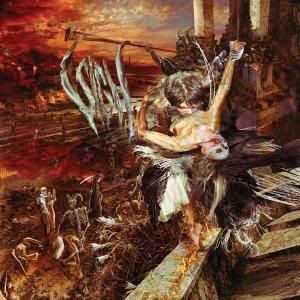 3. Sigh, Scenes from Hell (The End)
3. Sigh, Scenes from Hell (The End)
Japan's — shit, the world's — nuttiest metal band arrives with the whacked-out, visionary album they should have given us years ago. The first Eastern band to make a splash in the black metal scene way back when, Sigh has since birth consistently taken risks and gleefully scorned underground metal convention. Their eighth full-length suite introduces frontman Mirai Kawashima's saxophone-playing, bondage-clad girlfriend Dr. Mikannibal to the recording lineup, which foreshadows the heavy presence of woodwinds (as well as brass and strings) on Scenes. The mad maestros also incorporate a hearty selection of vintage keyboard tones and psychedelic sound effects, restoring the essential Sigh freak factor that was missing on 1997's relatively normal Hangman's Hymns. The material otherwise is an extension of its predecessor's fusion of high-octane German thrash riffs and symphonic black metal pomp. However, it's livelier and much more fun. Sometimes it sounds like ska-thrash, sometimes like feral longhairs mocking vintage cartoon music, sometimes like gnarly doom metal performed by a zombie cabaret act. The songs themselves pull together tightly despite their frequent detours and delightfully distracting ornamentation. And, damn, that freaky cover art!
"The Soul Grave" (live June 18, 2010 at Hellfest Open Air, Clisson, France)
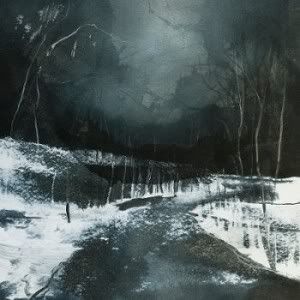 4. Agalloch, Marrow of the Spirit (Profound Lore)
4. Agalloch, Marrow of the Spirit (Profound Lore)
A decade ago, Agalloch was just a promising little cult band from Oregon who typified the quality roster at The End, which was at the time America's most consistent, forward-thinking niche metal label. Today, they receive positive coverage from snobby yuppie media like Pitchfork and NPR, and debuted their fourth LP for Profound Lore, currently America's most consistent, forward-thinking niche metal label. Agalloch's sudden hipness is most shocking because on the surface, little has thankfully changed. Their organic blend of black/death/goth/doom remains steeped in the classic Opeth/Katatonia/Ulver template of sprawling, hypnotic, tragic melody, and they continue to enrich it with textures from neo-folk, post-rock and experimental noise. Actually, Marrow is the harshest Agalloch album yet due to its charred-earth analog recording and new member Aesop Dekker, who offers a more visceral, punishing drum performance than this outfit has ever employed. The heavier approach is perfectly integrated with the signature high-pitched leads, whispery rasps and elemental pagan atmosphere. With Nevermore gone (and their final disc a bit lacking), Agalloch has finally slid into their spot as my favorite American metal band, and personally, I'm glad that people finally know who these shadowy giants are.
"Into the Painted Grey" (live December 17, 2010 at Berbati's Pan, Portland, OR)
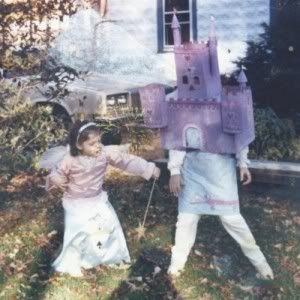 5. Fang Island, Fang Island (Sargent House)
5. Fang Island, Fang Island (Sargent House)
Fang Island's self-titled debut might begin and end with manipulated static and feedback, but it sure sounds like firecrackers and crickets. The disc appropriately evokes an idyllic summer evening even before the fade-in of a mini-symphony in buzzing harmonic guitars, which pauses for a few moments of ecclesiastical crooning, then explodes into upbeat rawk gushing with bright guitar doodles and hyper, loose-limbed rhythm contortions. The through-line is enthusiasm, which sets the youngsters apart from their sorta-math-metal indie forebears, who were always too concerned with looking cool to delve this deeply into overblown joy. The funny thing is that I had listened to this glorious blue raspberry brainfreeze a number of times before I realized that it is not largely composed of instrumentals. Somehow, the sweaty, colorful interplay of the quintet's instruments had almost completely blocked out their commingled voices as it flooded my skull with sugar prog overload. The first breather doesn't come until twenty minutes in, when the crescendo of "Davey Crockett" signals the final stretch of the mercifully brief set. Technical playing, towering melodies, everybody singing at once... Fang Island is perhaps the only indie rock album that all power metal fans should hear before they die.
"Careful Crossers" (official music video)
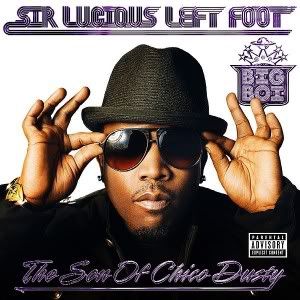 6. Big Boi, Sir Lucius Leftfoot... The Son of Chico Dusty (Def Jam)
6. Big Boi, Sir Lucius Leftfoot... The Son of Chico Dusty (Def Jam)
Ever since OutKast's epochal double solo album Speakerboxx/The Love Below, I've gone back and forth about whose disc is better. I will admit that Andre "3000" Benjamin's set, with its smoky jazz and falsetto funk tangents, seemed far more innovative to me back in 2003. These days, though, I'm leaning toward Antwon "Big Boi" Patton's half, which is more easily identifiable as a big-budget rap record, but also maintains a more consistent momentum without skimping on eclectic flavors. In this, Sir Lucius Leftfoot can be seen as a sequel to Speakerboxx. Never sitting still for too long, Patton's lyrics range from boastful and horny to abstract and vaguely political, always in command as he plays with rhyme schemes. Lyrics also reveal that a number of the tracks were gestating or finished years before release. In fact, three singles once intended for the album hit the public so long before the album that it didn't make sense to include them on it. (That, and OutKast's record company kept Benjamin's voice off the finished product.) Still, nearly every track is peppered with diverse guests, as pop rappers T.I. and Gucci Mane, unique newcomers Janelle Monáe and Yelawolf and wildcards George Clinton and Jamie Foxx drop by the party. The host's incisive mic skills, rhyming acumen and self-assured personality make Lucius a slicker, funkier, catchier alternative to
hip-hop of both the stupid radio and stagnant underground varieties.
"Shutterbugg" (feat. Cutty) (official music video)
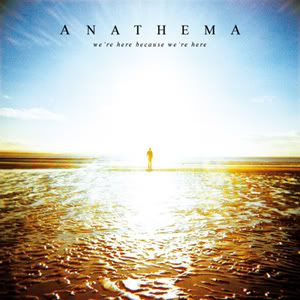 7. Anathema, We're Here Because We're Here (Kscope)
7. Anathema, We're Here Because We're Here (Kscope)
After a six-year wait for Anathema's eighth album, it was certain that this forever-evolving outfit would sound a bit different this time. This is their fourth album in a row with some sort of eternal landscape depicted in the cover art, and the brightly-lit, wide-open image that adorns We're Here reflects the songs within. Now primarily comprised of siblings from two British families, Anathema stays true to their emotionally nude legacy, only instead of coping with loss, fear and inner turmoil, they have discovered strength in love and perseverance. Thankfully, the surges of joy remain overwhelming torrents in the best Anathema tradition, the Cavanagh boys wringing those primordial guitars for every last drop of feeling. The usual Britrock influences (Pink Floyd, Nick Drake, Radiohead) still linger in the songs, but the gang has obviously ingested more post-rock in recent times, evolving textures and volumes with deliberate care. Even a stab at Coldplay mass appeal in the skyward soother "Dreaming Light" ends up an agreeably romantic detour. The band released early versions of three of these songs online years ago, and a few others have been aired at live shows for a while, the compositions now lovingly massaged and confidently perfected. The only nervousness to be found is rooted in the delirious rush of leaping into the unknown.
"Thin Air" (live May 7, 2010 at Maçka Küçükçiftlik Park, Istanbul, Turkey)
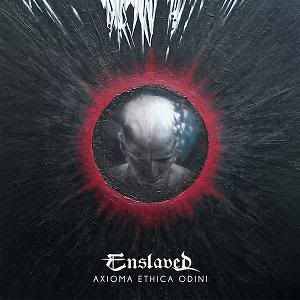 8. Enslaved, Axioma Ethica Odini (Nuclear Blast)
8. Enslaved, Axioma Ethica Odini (Nuclear Blast)
I should have known not to worry about 2008's Vertebrae. After a decade and a half of introspective, explorative, risk-taking pagan black metal, the previous Enslaved album was curiously inert, not dull so much as unchallenging in its harshed-up Pink Floyd variations. Of course, it was their biggest success to date, as mainstream metal critics and audiences finally had an easy-to-grasp Enslaved album to praise. Coupled with a move to a higher-profile record label, I prepared to watch one of my favorite bands spoiled by the lure of populism. But Enslaved are too wise, and have never recorded the same album twice. Axioma Ethica Odini retains the natural flow of Vertebrae, an admittedly more cohesive album than the few that came before it. However, there is greater individuation among songs, as well as more energy and excitement, a balance of craggy peaks and verdant valleys they haven't achieved in some time. In some aspects, the venerable Vikings' latest sounds like your regular progressive metal band, particularly the spacy textures, the earthy groove found in the mellower sections and keyboardist Herbrand Larsen's most confident and dramatic clean vocal performance to date. That's OK, because prog metal is at heart what Enslaved plays. Yet they have always been more than just prog, black, experimental, whatever, and, after three albums, this Enslaved lineup finally captured that intangible ingenuity here.
"Ethica Odini" (official music video)
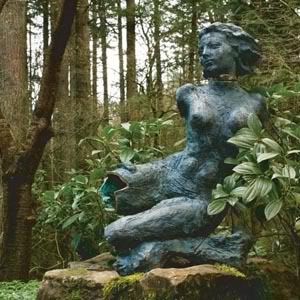 9. Menomena, Mines (City Slang)
9. Menomena, Mines (City Slang)
A great pop band with an sophisticated sense of experimentation, Menomena greatly impressed me and many others with their 2007 set entitled Friend and Foe. Theirs is definitely a signature sound, frequently featuring a simmering smear of twinkling guitars, powerhouse rhythms that were literally decided by a machine, occasional horn and/or keyboard support and a lead vocalist in each member of the trio. This concoction is surely some sort of indie rock, but there are also strong whiffs of prog, jazz, ambient and jam band approaches, so taking any given track out of album context gives a different impression of Menomena's music. Mines gives you breezy pop, big dumb blazing rock, sweetly rendered lullabies and burbling funkiness all for the price of one admission. The songs crackle with creativity, and maybe even get a little too weird at times, but that's forgiven due to the earnest, messy, artsy fun this band engenders. Now that co-founder Brent Knopf has left Menomena, I sincerely hope that the synergy they've cultivated thus far will not be compromised.
"Five Little Rooms" (live July 28, 2010 at KEXP studio, Seattle, WA)
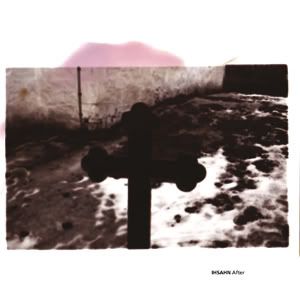 10. Ihsahn, After (Candlelight)
10. Ihsahn, After (Candlelight)
At one early-career juncture, Norwegian black metal institution Emperor was on a forced hiatus, unable to complete the follow-up to their venerated debut because 75% of the lineup was in jail for crimes ranging from church burning to murder. Vocalist, guitarist and songwriter Ihsahn was the sole exception, and to this day remains the only ex-Emperor member who seems most occupied with evolving his musicianship. Looking back at the final Emperor material, various projects with his wife and his solo career thus far, he's clearly drifted away from that fabled black metal wall of sound, opting for a progressive, at times avant-garde, approach. After, Ihsahn's third solo disc, is completely in line with that adventurous, intelligent spirit, introducing a post-metal flavor that is new to his arsenal, along with the surprising integration of saxophone by Shining frontman Jørgen Munkeby. Barring the manic, fun twists of "A Grave Inversed," the songs mostly hover between contemplative prog majesty and massive, dejected doom. They are at once accessible and unbearably weighty, comfortable and unfamiliar, cerebral and mired in human turmoil. Emotions reverberate throughout these wide-open corridors, which Ihsahn obviously sculpted in fervent reflection. Despite the winding path he's walked, the man still cares deeply about his music and its effect on a listener, which is more than you can say about many of his peers.
"On the Shores" (live April 2, 2010 at Inferno Festival, Oslo, Norway)
15 HONORABLE MENTIONS:
65daysofstatic, We Were Exploding Anyway (Hassle)
Arcade Fire, The Suburbs (Merge)
Barren Earth, Curse of the Red River (Peaceville)
Das Racist, Shut Up, Dude (Mishka/Greedhead)
Elvenking, Red Silent Tides (AFM)
Gogol Bordello, Trans-Continental Hustle (Dmz/Columbia)
Gorillaz, Plastic Beach (Virgin)
Helloween, 7 Sinners (The End/Sony)
Interpol, Interpol (Matador)
Mike Patton, Mondo Cane (Ipecac)
Murder By Death, Good Morning, Magpie (Vagrant)
Nachtmystium, Addicts: Black Meddle Part II (Century Media)
Orphaned Land, The Never Ending Way of ORwarriOR (Century Media)
Overkill, Ironbound (Nuclear Blast)
Slough Feg, The Animal Spirits (Profound Lore)
I don't want to belabor this. Of course, I must iterate that these are my favorite full-length albums released during the past two years. I'm not saying they're the best, because I couldn't possibly have heard every album that came out in order to say so. My rule is to never trust anyone who uses the adjective "best" when describing their year-summary music lists (nor anyone who finishes theirs in time for an early December deadline). There are huge gaps in everyone's musical diet, especially if you only listen to one radio station or one type of music. Even the most eclectic listeners must ignore stuff that they think won't interest them in order to spend time with stuff that they think will. I do it, you do it, there's nothing wrong with it. But we can't honestly use "best," which implies not only judgment, but sweeping finality. I really enjoyed, and still enjoy, each of these. You might, you might not. I hope you at least enjoy reading this little trip back in time.
2009
 1. Katatonia, Night Is the New Day (Peaceville)
1. Katatonia, Night Is the New Day (Peaceville)The fourth — and evidently last — album by Katatonia's longest-running lineup is the subtlest set of tracks my favorite current band has released to date. Sorta gothic, sorta progressive, sorta metal, sorta arena indie rock, the Swedes remain difficult to adequately describe (in no way, as some may claim, a "Tool clone"). Night crushes and heaves one moment, twinkles and soothes the next. The dynamics between loud and soft are pushed to their furthest extremes within the wide confines of the Katatonia sound, now abetted by tasteful synths and electronic embellishment by recent collaborator Frank Default. All the extremes of style and emotion are expertly centered by the quintet, shimmering leads and undulating rhythms anchored by Jonas Renkse's aching, supremely confident vocals. I have even come to terms with "Idle Blood," the beautiful ballad which I hope is a one-time-only sound-alike tribute to Katatonia's buddies in Opeth. This album sounds exactly the way 2009 felt to me... nervous, dejected, grasping, pensive, hopeful, and, at the last second, complete.
"The Longest Year" (official music video)
 2. Týr, By the Light of the Northern Star (Napalm)
2. Týr, By the Light of the Northern Star (Napalm)A pity about the lousy cover art (is he crying because he broke the cross?), as this is the sound of a great cult band reaching a higher echelon. Týr hails from the Faroe Islands, and their singular style blends the intricate rhythms of Faroese folk songs into bright, energized heavy metal. Here, they decided to streamline their fussy sound into something more immediate, starting with amazing opener "Hold the Heathen Hammer High," a barnstormer bursting with ridiculous fist-pumping lyrics and a boisterous high-speed chorus that rivals the greatest of old school German metal beerhall sing-alongs. Sure, the old Týr quirkiness shows up here and there during the first half, but the largely English-sung bulk rejects the sprawling epics toward which the quartet had been drifting, single-mindedly peppered with code words such as "pagan," "heathen" and "sword." Týr remains adept enough to thunder and soar through what could have been a corny LARP soundtrack, keening down from the eternal sky like strange Scandinavian gods.
"Hold the Heathen Hammer High" (official music video)
 3. Animal Collective, Merriweather Post Pavilion (Domino)
3. Animal Collective, Merriweather Post Pavilion (Domino)Even though it was practically illegal to not have this on a "Best of 2009" list, I appreciate the mass appeal of this bunch's recent work. Merriweather is a bright, happy-sounding jumble of sounds and textures that feels smart in its esoteric construction, but also just plain feels good. It's head music you can feel in your guts. What hits first and foremost is the thick texture, heavy and dense as a swamp, frequently exploding into glittery alien pop psychedelia. There's so much shit going on at any given time that it's difficult to tell which instrument is which, what's sampled and what's organic. The singles glow with the sweaty, vibrant, mantra-like energy of dance music, while the cooldowns simmer and float wistfully. Everything is soaked in effects, but what you make out through the haze focuses on the astonishingly relatable subjects of love, family and home. And therein is the true key to Animal Collective's triumph: making the mundane sound fantastic, or at least encouraging a listener to appreciate the daily beauty they might otherwise take for granted. And if you don't like it, you can just stare at the cover art for a while.
"Summertime Clothes" (official music video)
 4. Mastodon, Crack the Skye (Reprise)
4. Mastodon, Crack the Skye (Reprise)Looking back at the '00s, Mastodon obviously stands among the most important and beloved metal bands of their formative time. When their fourth album rolled out at the end of the decade, the quartet was where Metallica had been two decades prior: a rare serious metal band that everyone from graying biker dudes to teen punker chicks to college rock geeks might agree upon. Thus, Crack the Skye is in essence Mastodon's ...And Justice for All, a mature, confident, hermetically sealed magnum opus polished with accessible ass-kicking. There are memorable choruses in the sing-along — rather than shout-along — vein, the harsher vocals and youthful glimpses of grindcore now completely absent. In their place are a proggy fluidity, a wind-hewn smoothness that nods to the album's "air" theme (surely making The Mars Volta jealous, the concept album's plot relates an astral-traveling paraplegic's Devil-battling adventures with Rasputin). Ambition and acceptance have ruined many a once-great metal band (see: Metallica), but Skye gives me enormous confidence in Mastodon.
"Divinations" (official music video)
 5. Woods of Ypres, Woods 4: The Green Album (Practical Art)
5. Woods of Ypres, Woods 4: The Green Album (Practical Art)David Gold makes metal for those of us who live in the real world. The incredibly personal nature of his lyrics and themes is unfortunately not prevalent in a genre of music that is founded in raw emotion, and this is only one reason Gold's Woods of Ypres remains a special band. On this latest (recently re-released by Earache Records), the music leans toward the doom/goth side of the eclectic Woods sound, the sad, loping melodies showing an obvious love for the sullen lushness of sardonic "green" gloomsters Type O Negative (I hope Peter Steele heard this before he passed away). "Green" also signifies the relatable story of renewal which forms the backbone of Gold's musical diary of leaving his Canadian homeland for a teaching stint in South Korea. As our narrator enters, his relationship and home are torn from him, and he descends into despair. He takes a chance when offered a fresh start in a new environment, but he has carried the weight of the past with him. After much struggle, catharsis and realization, he finds the resolve within to move on. With the first pressing of the self-released CD, Gold includes a copy of Slaughter of the Seoul, the decent album he recorded with death/thrash metal act Necramyth during his time overseas. Because Slaughter's creation was part of Gold's life, the result is part of Woods 4, a sincere personal touch that typifies how this outfit operates.
"I Was Buried in Mount Pleasant Cemetery" (official music video)
 6. Muse, The Resistance (Warner Bros.)
6. Muse, The Resistance (Warner Bros.)It feels good to genuinely enjoy a band that's as popular as Muse is. There's something warm in the communal bonding of a stadium rock sensation that I just don't get from all the little specialty acts with which I spend more time. But as we all know, modern megastars usually blow goat fetuses, so it's usually safer to keep one's ears underground. In defiance, Matt Bellamy and his gang write strong hooks and lyrics with imaginative arrangements. Muse bothers to record dynamic albums meant to be listened to in full sequence, offering enough convincing dramatics to justify their hockey barn-packing status. The Resistance is clearly the work of a self-aware stadium rock sensation, one that gorges and fortifies itself on those thousands of skyward-thrust lighters and cell phones and amplifies the energy back as The People's Music. Yeah, it's arted up with solo piano excursions here and there, but it still evokes the usual Muse hodge-podge of prime U2, Depeche Mode and Queen, bands that once knew how to artfully move many souls at once. Loudly and fervently exhorting us to fight vague dystopian oppressions with love and togetherness and all that junk, the Brits gleam and yearn exactly where they should, building a perfect machine with a human heart.
"Uprising" (official music video)
 7. Madder Mortem, Eight Ways (Peaceville)
7. Madder Mortem, Eight Ways (Peaceville)Too much "progressive metal" is as stodgy as any old radio pop, too set in its ways to explore anything but accepted modes of furrow-browed expression. Although they're not reinventing anything, Norway's Madder Mortem deserves to be mentioned alongside better-known soulmates like Katatonia and Nevermore, as they are another fussy, stormy unit which excels at doing things its own way. This is mostly due to the incomparable Agnete Kirkevaag, whose vocals are a commanding weapon which can turn quickly from seductive serenity to blood-freezing ferocity. This keeps with her bandmates' subterranean palette, a cerebral, anxious, gothic stew which submerges chunky, downtuned metal in a velvety tub of late-night jazz. Ways is the most impressive album Madder Mortem has unleashed yet, diverse and even quite accessible in places, while striving to try new settings and applications for the band's established strengths. As in the past, the push/pull of disparate elements can be jarring, but it's exciting to hear this band (especially that amazing voice) teetering between meltdown and shutdown. There's always a latent lullaby or a churning maelstrom of exotic doom in wait, and throughout Ways remains dark and raw, yet beguiling and impeccably crafted.
"Where Dream & Day Collide" (official music video)
 8. Mr. Lif, I Heard It Today (Bloodbot Tactical Enterprises)
8. Mr. Lif, I Heard It Today (Bloodbot Tactical Enterprises)As the recession, bank and housing crises dominated, 2009 was a year fraught with pessimism and fear for a lot of non-rich Americans. The third album by the celebrated Boston MC gets my vote for the best musical encapsulation of this moment, the one which will be most worth revisiting years from now. Mr. Lif's delivery is as ever focused on substance over style, although his laser-sharp rhymes wouldn't sound half as convincing without his sly coffeehouse drone. Woven together into an industrial-strength update of the dense realm the Bomb Squad built on Public Enemy's classics, the mesmerizing beats by the likes of Edan, Headnotic, Batsauce and Willie Evans Jr. are vital components of Lif's political-meets-personal work. Guest spots are kept to a lean minimum, and the contributors (particularly a perfectly icy Bahamadia on "Breathe") add flavor without sucking the focus from the star. Lif remains committed to the soul of socially concerned rap, curiously nestling a police brutality skit that could have been on an early '90s Ice Cube disc among screeds of post-Obama ambivalence and breakdowns of the mortgage fallout. And even toward the end of the album, when heartfelt rays of kindness and kinship seep into the songs, that vibrant mix envelops the listener like a pulsing glove.
"The Sun" (official music video)
 9. Amorphis, Skyforger (Nuclear Blast)
9. Amorphis, Skyforger (Nuclear Blast)It's been a long journey back to the height of excellence for Amorphis, who remain Finland's most singular contribution to metal music. In the '90s, they were a decent melodic death metal band who stumbled into the hidden crossroads between romantic national folklore and expansive '70s psychedelia, but soon soured the recipe by gradually toning down their heavier tendencies. Although to my ears they never lost the plot completely, the entrance of versatile vocalist Tomi Joutsen in 2005 was surely the catalyst for Amorphis to once again realize their powerful potential. Two very good records later, the seemingly effortless songwriting and performances on Skyforger is that realization. Fluid guitar (particularly Esa Holopainen's molten leads) and spacy keyboards churn out winsome traditional melodies, adding grandiose textures to glistening goth-pop jams and imposing Eurometal monoliths alike. Yet dreadlocked Joutsen is the glue, a mythic marvel who can pull off tenderness and wounded melancholy as capably as he can bravado and earth-quaking roars. He is clearly the best frontman this band has ever had, and his performance catapults each already vital song into an untouchable skyward realm.
"Silver Bride" (official music video)
 10. The Appleseed Cast, Sagarmatha (Vagrant/The Militia Group)
10. The Appleseed Cast, Sagarmatha (Vagrant/The Militia Group)I lack the sweeping knowledge of the post-rock landscape which would allow me to ascertain this album's quality in relation to everything else out there. Regardless, I know that The Appleseed Cast's seventh album creates an incredible realm in which to get lost. Before Sagarmatha, I had previously only heard the Kansas quintet's two most recent discs, which were by all accounts finessed fusions of the band's formative old-school emo (like, emotional post-hardcore, not goth costumed pop-punk) and the atmospheric instrumental tendencies of their acclaimed two-disc Low Level Owl saga. Drifting in on a shimmering pillow of chiming chords and pulsing rhythm, it's only after a six minute journey through a sun-dappled landscape, just as the pace quickens like a jet taking off, that Chris Crisci's voice creeps in to close out the last few minutes of the opener. The Appleseed Cast balances that mysterious ebb and flow, at times abruptly shifting into earthen rock that magically carries over the bleary-eyed bliss. Craftily, the giant guitar rock segments never truly disrupt the flow, rather providing intrigue in a smooth, addictive ride, a road trip with perfect weather, gorgeous scenery and no traffic.
"South Col" (live Feb. 12, 2009 at The Glass House, Pomona, CA)
15 HONORABLE MENTIONS:
Antony and the Johnsons, The Crying Light (Secretly Canadian)
Between the Buried and Me, The Great Misdirect (Victory)
Candlemass, Death Magic Doom (Nuclear Blast)
The Chasm, Farseeing the Paranormal Abysm (Lux Inframundis)
The Decemberists, The Hazards of Love (Capitol)
Dethklok, Dethalbum II (Williams Street)
Eels, Hombre Lobo: 12 Songs of Desire (EWorks/Vagrant)
Finsterforst, ...Zum Tode Hin (Einheit)
HORSE the band, Desperate Living (Vagrant)
Hypocrisy, A Taste of Extreme Divinity (Nuclear Blast)
Mos Def, The Ecstatic (Downtown)
Samael, Above (Nuclear Blast)
Sun of the Blind, Skullreader (Avantgarde)
We Were Promised Jetpacks, These Four Walls (FatCat)
Zombi, Spirit Animal (Relapse)
2010
 1. Blind Guardian, At the Edge of Time (Nuclear Blast)
1. Blind Guardian, At the Edge of Time (Nuclear Blast)I've lazily described Blind Guardian to the uninitiated as "Queen on steroids," and Time, my second-favorite current band's ninth album, does not make me a liar, being their biggest sounding, most diverse and dramatic set to date. The Germans' main innovations this time are found in the bookends, a pair of grandiose epics that seamlessly integrate an orchestra (shockingly, a first). In between, it effectively tours all the territories BG has traversed during their career, from the oddly catchy prog-pop of recent years to the hairpin turn speed metal sing-alongs that they once seemed content to leave behind in the last millennium. Then there are the ballads, two of the best they've ever done, sumptuous medieval jobs that finally allow drummer/bagpiper/flutist Frederik Ehmke to flex folky in a manner befitting the bonfires of the gods. All of this gleams with brilliant melody, teems with engaging hooks and reams with Wagnerian bombast. Inspired by the likes of George R.R. Martin, Robert Jordan and the "Sacred" RPGs, the lyrics distill the raw emotion of nerdy fantasy, their world-weary wizards and wild-eyed warriors always asking the Big Questions amidst the magickal melees. There is a reason Blind Guardian's music is called "power metal": it obliterates prosaic notions of modesty or practicality, instead filling the listener with celestial energy, passion and, yes, power.
"A Voice in the Dark" (official music video)
 2. Eels, End Times/Tomorrow Morning (EWorks/Vagrant)
2. Eels, End Times/Tomorrow Morning (EWorks/Vagrant)I don't care if it's cheating to have these two albums in one slot. These companions are perfect analogs for the course of my year. Along with 2009's Hombre Lobo, a once-dismissed record I have come to love, the two albums Eels released during 2010 make up a conceptual trilogy about affairs of the heart. As the year dawned, End Times emerged as an early favorite with its understated, dejected bleakness and claustrophobic beauty, its garage folk melodies simple and spare. Reflecting the painful dissolution of Mark Everett Horton's marriage, it allows for little frivolity, and even less in the way of hope. By the end of summer, Morning appeared, offering a dreamier, more fertile and buoyant look at new beginnings. The rich arrangements are wide open, as if freshly awoken to life's surprises, complimenting the confident lyrics. I was already devoted to E's bare-it-all eclecticism, yet the way these discs coincided with my moods upon their respective release cemented a special place for them in my heart, slotting the whole trilogy just below the epochal Blinking Lights and Other Revelations. Sure, if you like this outfit, or any sort of honest, occasionally rootsy rock with easy hooks and a restless spirit, you will like these albums. If you had the kind of 2010 that I had, you will wonder if E was spying on you.
"Unhinged" (official music video)
 3. Sigh, Scenes from Hell (The End)
3. Sigh, Scenes from Hell (The End)Japan's — shit, the world's — nuttiest metal band arrives with the whacked-out, visionary album they should have given us years ago. The first Eastern band to make a splash in the black metal scene way back when, Sigh has since birth consistently taken risks and gleefully scorned underground metal convention. Their eighth full-length suite introduces frontman Mirai Kawashima's saxophone-playing, bondage-clad girlfriend Dr. Mikannibal to the recording lineup, which foreshadows the heavy presence of woodwinds (as well as brass and strings) on Scenes. The mad maestros also incorporate a hearty selection of vintage keyboard tones and psychedelic sound effects, restoring the essential Sigh freak factor that was missing on 1997's relatively normal Hangman's Hymns. The material otherwise is an extension of its predecessor's fusion of high-octane German thrash riffs and symphonic black metal pomp. However, it's livelier and much more fun. Sometimes it sounds like ska-thrash, sometimes like feral longhairs mocking vintage cartoon music, sometimes like gnarly doom metal performed by a zombie cabaret act. The songs themselves pull together tightly despite their frequent detours and delightfully distracting ornamentation. And, damn, that freaky cover art!
"The Soul Grave" (live June 18, 2010 at Hellfest Open Air, Clisson, France)
 4. Agalloch, Marrow of the Spirit (Profound Lore)
4. Agalloch, Marrow of the Spirit (Profound Lore)A decade ago, Agalloch was just a promising little cult band from Oregon who typified the quality roster at The End, which was at the time America's most consistent, forward-thinking niche metal label. Today, they receive positive coverage from snobby yuppie media like Pitchfork and NPR, and debuted their fourth LP for Profound Lore, currently America's most consistent, forward-thinking niche metal label. Agalloch's sudden hipness is most shocking because on the surface, little has thankfully changed. Their organic blend of black/death/goth/doom remains steeped in the classic Opeth/Katatonia/Ulver template of sprawling, hypnotic, tragic melody, and they continue to enrich it with textures from neo-folk, post-rock and experimental noise. Actually, Marrow is the harshest Agalloch album yet due to its charred-earth analog recording and new member Aesop Dekker, who offers a more visceral, punishing drum performance than this outfit has ever employed. The heavier approach is perfectly integrated with the signature high-pitched leads, whispery rasps and elemental pagan atmosphere. With Nevermore gone (and their final disc a bit lacking), Agalloch has finally slid into their spot as my favorite American metal band, and personally, I'm glad that people finally know who these shadowy giants are.
"Into the Painted Grey" (live December 17, 2010 at Berbati's Pan, Portland, OR)
 5. Fang Island, Fang Island (Sargent House)
5. Fang Island, Fang Island (Sargent House)Fang Island's self-titled debut might begin and end with manipulated static and feedback, but it sure sounds like firecrackers and crickets. The disc appropriately evokes an idyllic summer evening even before the fade-in of a mini-symphony in buzzing harmonic guitars, which pauses for a few moments of ecclesiastical crooning, then explodes into upbeat rawk gushing with bright guitar doodles and hyper, loose-limbed rhythm contortions. The through-line is enthusiasm, which sets the youngsters apart from their sorta-math-metal indie forebears, who were always too concerned with looking cool to delve this deeply into overblown joy. The funny thing is that I had listened to this glorious blue raspberry brainfreeze a number of times before I realized that it is not largely composed of instrumentals. Somehow, the sweaty, colorful interplay of the quintet's instruments had almost completely blocked out their commingled voices as it flooded my skull with sugar prog overload. The first breather doesn't come until twenty minutes in, when the crescendo of "Davey Crockett" signals the final stretch of the mercifully brief set. Technical playing, towering melodies, everybody singing at once... Fang Island is perhaps the only indie rock album that all power metal fans should hear before they die.
"Careful Crossers" (official music video)
 6. Big Boi, Sir Lucius Leftfoot... The Son of Chico Dusty (Def Jam)
6. Big Boi, Sir Lucius Leftfoot... The Son of Chico Dusty (Def Jam)Ever since OutKast's epochal double solo album Speakerboxx/The Love Below, I've gone back and forth about whose disc is better. I will admit that Andre "3000" Benjamin's set, with its smoky jazz and falsetto funk tangents, seemed far more innovative to me back in 2003. These days, though, I'm leaning toward Antwon "Big Boi" Patton's half, which is more easily identifiable as a big-budget rap record, but also maintains a more consistent momentum without skimping on eclectic flavors. In this, Sir Lucius Leftfoot can be seen as a sequel to Speakerboxx. Never sitting still for too long, Patton's lyrics range from boastful and horny to abstract and vaguely political, always in command as he plays with rhyme schemes. Lyrics also reveal that a number of the tracks were gestating or finished years before release. In fact, three singles once intended for the album hit the public so long before the album that it didn't make sense to include them on it. (That, and OutKast's record company kept Benjamin's voice off the finished product.) Still, nearly every track is peppered with diverse guests, as pop rappers T.I. and Gucci Mane, unique newcomers Janelle Monáe and Yelawolf and wildcards George Clinton and Jamie Foxx drop by the party. The host's incisive mic skills, rhyming acumen and self-assured personality make Lucius a slicker, funkier, catchier alternative to
hip-hop of both the stupid radio and stagnant underground varieties.
"Shutterbugg" (feat. Cutty) (official music video)
 7. Anathema, We're Here Because We're Here (Kscope)
7. Anathema, We're Here Because We're Here (Kscope)After a six-year wait for Anathema's eighth album, it was certain that this forever-evolving outfit would sound a bit different this time. This is their fourth album in a row with some sort of eternal landscape depicted in the cover art, and the brightly-lit, wide-open image that adorns We're Here reflects the songs within. Now primarily comprised of siblings from two British families, Anathema stays true to their emotionally nude legacy, only instead of coping with loss, fear and inner turmoil, they have discovered strength in love and perseverance. Thankfully, the surges of joy remain overwhelming torrents in the best Anathema tradition, the Cavanagh boys wringing those primordial guitars for every last drop of feeling. The usual Britrock influences (Pink Floyd, Nick Drake, Radiohead) still linger in the songs, but the gang has obviously ingested more post-rock in recent times, evolving textures and volumes with deliberate care. Even a stab at Coldplay mass appeal in the skyward soother "Dreaming Light" ends up an agreeably romantic detour. The band released early versions of three of these songs online years ago, and a few others have been aired at live shows for a while, the compositions now lovingly massaged and confidently perfected. The only nervousness to be found is rooted in the delirious rush of leaping into the unknown.
"Thin Air" (live May 7, 2010 at Maçka Küçükçiftlik Park, Istanbul, Turkey)
 8. Enslaved, Axioma Ethica Odini (Nuclear Blast)
8. Enslaved, Axioma Ethica Odini (Nuclear Blast)I should have known not to worry about 2008's Vertebrae. After a decade and a half of introspective, explorative, risk-taking pagan black metal, the previous Enslaved album was curiously inert, not dull so much as unchallenging in its harshed-up Pink Floyd variations. Of course, it was their biggest success to date, as mainstream metal critics and audiences finally had an easy-to-grasp Enslaved album to praise. Coupled with a move to a higher-profile record label, I prepared to watch one of my favorite bands spoiled by the lure of populism. But Enslaved are too wise, and have never recorded the same album twice. Axioma Ethica Odini retains the natural flow of Vertebrae, an admittedly more cohesive album than the few that came before it. However, there is greater individuation among songs, as well as more energy and excitement, a balance of craggy peaks and verdant valleys they haven't achieved in some time. In some aspects, the venerable Vikings' latest sounds like your regular progressive metal band, particularly the spacy textures, the earthy groove found in the mellower sections and keyboardist Herbrand Larsen's most confident and dramatic clean vocal performance to date. That's OK, because prog metal is at heart what Enslaved plays. Yet they have always been more than just prog, black, experimental, whatever, and, after three albums, this Enslaved lineup finally captured that intangible ingenuity here.
"Ethica Odini" (official music video)
 9. Menomena, Mines (City Slang)
9. Menomena, Mines (City Slang)A great pop band with an sophisticated sense of experimentation, Menomena greatly impressed me and many others with their 2007 set entitled Friend and Foe. Theirs is definitely a signature sound, frequently featuring a simmering smear of twinkling guitars, powerhouse rhythms that were literally decided by a machine, occasional horn and/or keyboard support and a lead vocalist in each member of the trio. This concoction is surely some sort of indie rock, but there are also strong whiffs of prog, jazz, ambient and jam band approaches, so taking any given track out of album context gives a different impression of Menomena's music. Mines gives you breezy pop, big dumb blazing rock, sweetly rendered lullabies and burbling funkiness all for the price of one admission. The songs crackle with creativity, and maybe even get a little too weird at times, but that's forgiven due to the earnest, messy, artsy fun this band engenders. Now that co-founder Brent Knopf has left Menomena, I sincerely hope that the synergy they've cultivated thus far will not be compromised.
"Five Little Rooms" (live July 28, 2010 at KEXP studio, Seattle, WA)
 10. Ihsahn, After (Candlelight)
10. Ihsahn, After (Candlelight)At one early-career juncture, Norwegian black metal institution Emperor was on a forced hiatus, unable to complete the follow-up to their venerated debut because 75% of the lineup was in jail for crimes ranging from church burning to murder. Vocalist, guitarist and songwriter Ihsahn was the sole exception, and to this day remains the only ex-Emperor member who seems most occupied with evolving his musicianship. Looking back at the final Emperor material, various projects with his wife and his solo career thus far, he's clearly drifted away from that fabled black metal wall of sound, opting for a progressive, at times avant-garde, approach. After, Ihsahn's third solo disc, is completely in line with that adventurous, intelligent spirit, introducing a post-metal flavor that is new to his arsenal, along with the surprising integration of saxophone by Shining frontman Jørgen Munkeby. Barring the manic, fun twists of "A Grave Inversed," the songs mostly hover between contemplative prog majesty and massive, dejected doom. They are at once accessible and unbearably weighty, comfortable and unfamiliar, cerebral and mired in human turmoil. Emotions reverberate throughout these wide-open corridors, which Ihsahn obviously sculpted in fervent reflection. Despite the winding path he's walked, the man still cares deeply about his music and its effect on a listener, which is more than you can say about many of his peers.
"On the Shores" (live April 2, 2010 at Inferno Festival, Oslo, Norway)
15 HONORABLE MENTIONS:
65daysofstatic, We Were Exploding Anyway (Hassle)
Arcade Fire, The Suburbs (Merge)
Barren Earth, Curse of the Red River (Peaceville)
Das Racist, Shut Up, Dude (Mishka/Greedhead)
Elvenking, Red Silent Tides (AFM)
Gogol Bordello, Trans-Continental Hustle (Dmz/Columbia)
Gorillaz, Plastic Beach (Virgin)
Helloween, 7 Sinners (The End/Sony)
Interpol, Interpol (Matador)
Mike Patton, Mondo Cane (Ipecac)
Murder By Death, Good Morning, Magpie (Vagrant)
Nachtmystium, Addicts: Black Meddle Part II (Century Media)
Orphaned Land, The Never Ending Way of ORwarriOR (Century Media)
Overkill, Ironbound (Nuclear Blast)
Slough Feg, The Animal Spirits (Profound Lore)


 From our first glimpse of his Hawaiian-shirted frame, made more menacing by a whimsical flute on the soundtrack, it is very clear that Ed is not a real chimp. The credits clarify that he was played by two different people in a monkey suit bearing animatronic embellishments, while his vocalizations and other noises were made by a third person. He is unsettlingly lifelike at times, mostly when he is not ambulatory, because try as they might, the actors only approach an uncanny simian countenance. Although manager Chubb (reliably crusty coot Jack Warden) sends Coop to pick him up, it's not really made clear where Ed came from, who summoned him to the team or even why he was summoned. It's offhandedly mentioned once that he's the new mascot, although what does a chimp have to do with rockets? Naturally, Chubb puts him in a game as a substitute third baseman after he shows off his amazing fielding skills during practice, throwing a ball so hard it burns a hole through a player's glove.
From our first glimpse of his Hawaiian-shirted frame, made more menacing by a whimsical flute on the soundtrack, it is very clear that Ed is not a real chimp. The credits clarify that he was played by two different people in a monkey suit bearing animatronic embellishments, while his vocalizations and other noises were made by a third person. He is unsettlingly lifelike at times, mostly when he is not ambulatory, because try as they might, the actors only approach an uncanny simian countenance. Although manager Chubb (reliably crusty coot Jack Warden) sends Coop to pick him up, it's not really made clear where Ed came from, who summoned him to the team or even why he was summoned. It's offhandedly mentioned once that he's the new mascot, although what does a chimp have to do with rockets? Naturally, Chubb puts him in a game as a substitute third baseman after he shows off his amazing fielding skills during practice, throwing a ball so hard it burns a hole through a player's glove. Along with the prodigious primate, the team is comprised of one-note cartoons. There's the Aryan asshole pitcher who becomes Coop's sneering detractor and rival. There's the obnoxiously dumb guy who thinks Ed is Curious George and beseeches Coop to respect a superstitious horseshoe. There's the cheesy nice guy who's obviously going to have something bad happen to him, in this case an eventually-sacked sucker played by Jim "Jesus Christ" Caviezel. There's the Mexican pitcher who prefaces his exotic Spanish phasing ("Mi casa, su casa") with, "As we say back home..." These stereotypes have no problem with a chimp being placed on the roster because not only is he good, he wackily pulls the toupee off Kirby, the scheming son of the team's owner. Furthermore, Ed becomes a league fixture because the first time Chubb brings him out, a black umpire detects racism in the objections of the other team's coach and gives an indignant speech extolling the chimp's right to play. This circumstantial decision is never contested by another team or authority. When Ed makes an unassisted triple play during his first inning and then is walked because his strike zone is so small, Kirby literally gets dollar signs in his eyes.
Along with the prodigious primate, the team is comprised of one-note cartoons. There's the Aryan asshole pitcher who becomes Coop's sneering detractor and rival. There's the obnoxiously dumb guy who thinks Ed is Curious George and beseeches Coop to respect a superstitious horseshoe. There's the cheesy nice guy who's obviously going to have something bad happen to him, in this case an eventually-sacked sucker played by Jim "Jesus Christ" Caviezel. There's the Mexican pitcher who prefaces his exotic Spanish phasing ("Mi casa, su casa") with, "As we say back home..." These stereotypes have no problem with a chimp being placed on the roster because not only is he good, he wackily pulls the toupee off Kirby, the scheming son of the team's owner. Furthermore, Ed becomes a league fixture because the first time Chubb brings him out, a black umpire detects racism in the objections of the other team's coach and gives an indignant speech extolling the chimp's right to play. This circumstantial decision is never contested by another team or authority. When Ed makes an unassisted triple play during his first inning and then is walked because his strike zone is so small, Kirby literally gets dollar signs in his eyes.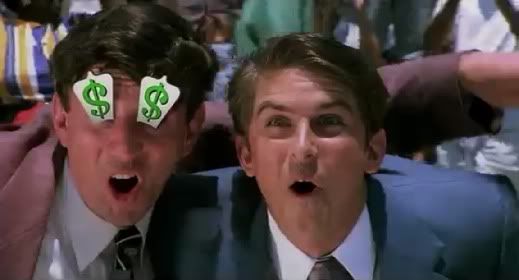 In a questionable exercise of coachly authority, Chubb forces Coop to let the chimp crash at his apartment. This is largely because Coop blows goats on the field, although when he's not playing in a game he can pitch baseballs like a really good baseball pitcher. He chokes hard during his very first game, which had to hurt more because the game was televised (as I'm sure most minor league games were during the '90s), complete with taunts by a broadcast commentator played by Jim O'Heir, currently seen as office punching bag Jerry on "Parks and Recreation." Coop gets all bent out of shape about his slump, practicing too hard and refusing to become distracted by dating his bland but interested neighbor Lydia, whose precocious daughter Liz becomes instant BFFs with Ed. He never lets his own shortcomings become the fuel for his dislike of Ed, though, even if the chimp is a way better player and becomes an instant sensation, appearing on the cover of Sports Illustrated and Teen Beat. There are so many other reasons to be pissed at this hideous manmonkey.
In a questionable exercise of coachly authority, Chubb forces Coop to let the chimp crash at his apartment. This is largely because Coop blows goats on the field, although when he's not playing in a game he can pitch baseballs like a really good baseball pitcher. He chokes hard during his very first game, which had to hurt more because the game was televised (as I'm sure most minor league games were during the '90s), complete with taunts by a broadcast commentator played by Jim O'Heir, currently seen as office punching bag Jerry on "Parks and Recreation." Coop gets all bent out of shape about his slump, practicing too hard and refusing to become distracted by dating his bland but interested neighbor Lydia, whose precocious daughter Liz becomes instant BFFs with Ed. He never lets his own shortcomings become the fuel for his dislike of Ed, though, even if the chimp is a way better player and becomes an instant sensation, appearing on the cover of Sports Illustrated and Teen Beat. There are so many other reasons to be pissed at this hideous manmonkey. Later, after being locked out, Ed breaks down the door to Coop's apartment, then steals his host's frozen dinner and devours it in a disgusting high-speed manner. Later still, he takes Coop's ancient truck on a white-knuckle joyride while the owner is unconscious in the passenger seat, breaking the gear shift and Bronx cheering out the window to the strains of Meat Loaf's "
Later, after being locked out, Ed breaks down the door to Coop's apartment, then steals his host's frozen dinner and devours it in a disgusting high-speed manner. Later still, he takes Coop's ancient truck on a white-knuckle joyride while the owner is unconscious in the passenger seat, breaking the gear shift and Bronx cheering out the window to the strains of Meat Loaf's " Kirby ushers in the third act by selling Ed to some thugs, and Lydia flexes her new-girlfriend muscle by guilting Coop into hunting the little fucker down. He finds Ed dressed in a clown suit, caged and being electrocuted. Rather than smiling and walking away, he barges in and scuffles with the toughs, leading a hasty getaway during which the simian teammates are separated. Recognizing a favorite treat, Ed stows away in a frozen banana truck, and contracts hypothermia by the time Coop nearly causes a deadly accident in the act of running the truck off the road. The chimp is placed in a human hospital, with breathing tubes and IVs and sheets on the beds and everything, and no one thinks that this is strange. He instantly gets better when Liz, seemingly abandoned at the hospital, prays and gives Ed his baseball glove, proving the old American adage that Jesus and baseball can cure anything.
Kirby ushers in the third act by selling Ed to some thugs, and Lydia flexes her new-girlfriend muscle by guilting Coop into hunting the little fucker down. He finds Ed dressed in a clown suit, caged and being electrocuted. Rather than smiling and walking away, he barges in and scuffles with the toughs, leading a hasty getaway during which the simian teammates are separated. Recognizing a favorite treat, Ed stows away in a frozen banana truck, and contracts hypothermia by the time Coop nearly causes a deadly accident in the act of running the truck off the road. The chimp is placed in a human hospital, with breathing tubes and IVs and sheets on the beds and everything, and no one thinks that this is strange. He instantly gets better when Liz, seemingly abandoned at the hospital, prays and gives Ed his baseball glove, proving the old American adage that Jesus and baseball can cure anything. "Ed" is indeed a shitty movie. If you ignore the plot and the freaky monkey suit, it's competently put together, but utterly without interest to anyone over the age of 10. I didn't mention some of its stupider sequences, such as when the chimp is flipping channels and comes across footage from "Friends" in which Schwimmer's pet monkey has crapped in Aniston's shoe (my hero!). There's a running thing where the Rockets' coaches flip a coin to predict Coop's fate in baseball, but it lands on its side and stays that way, waiting to drop until the very end. That pretty much sums up the flick. That, and how much goddamned denim these people wear.
"Ed" is indeed a shitty movie. If you ignore the plot and the freaky monkey suit, it's competently put together, but utterly without interest to anyone over the age of 10. I didn't mention some of its stupider sequences, such as when the chimp is flipping channels and comes across footage from "Friends" in which Schwimmer's pet monkey has crapped in Aniston's shoe (my hero!). There's a running thing where the Rockets' coaches flip a coin to predict Coop's fate in baseball, but it lands on its side and stays that way, waiting to drop until the very end. That pretty much sums up the flick. That, and how much goddamned denim these people wear.